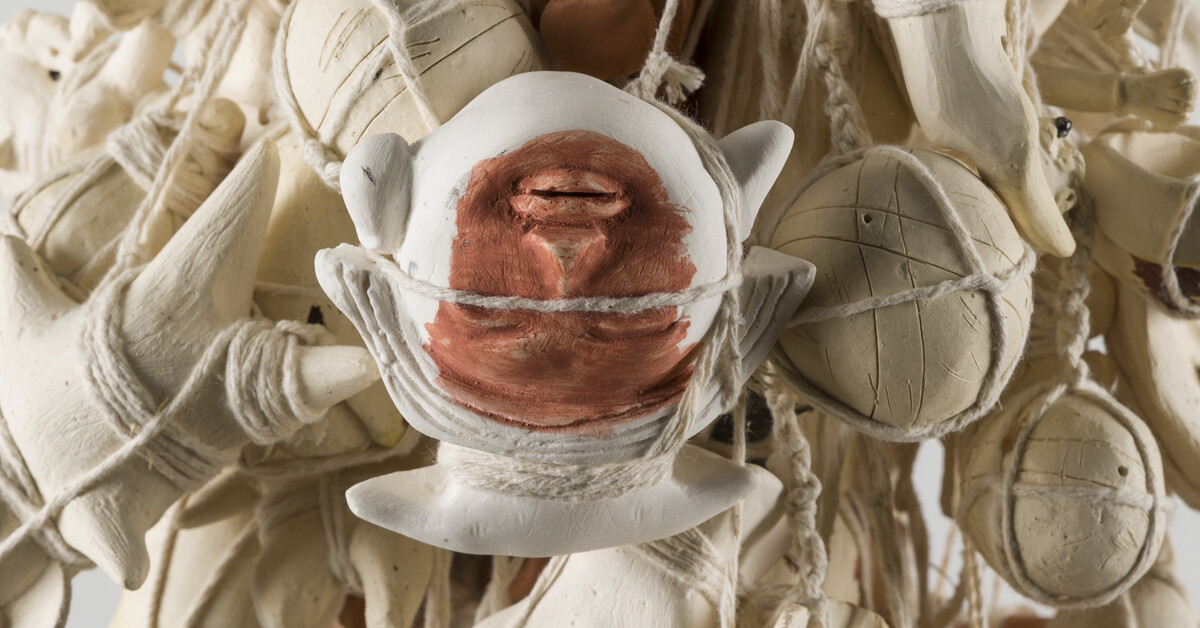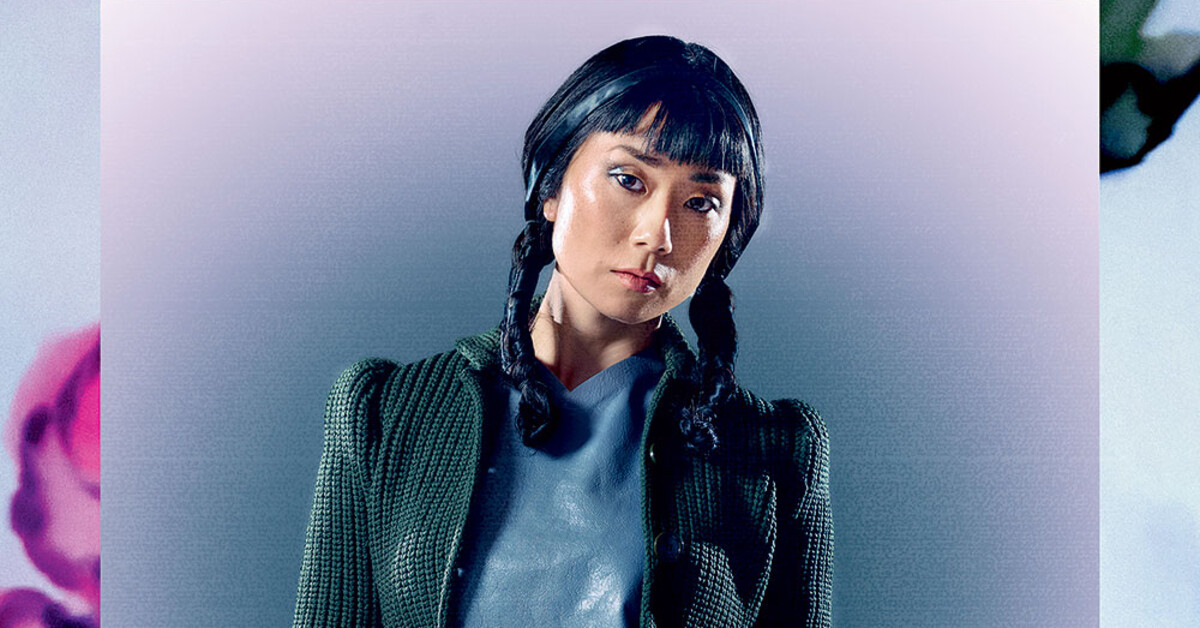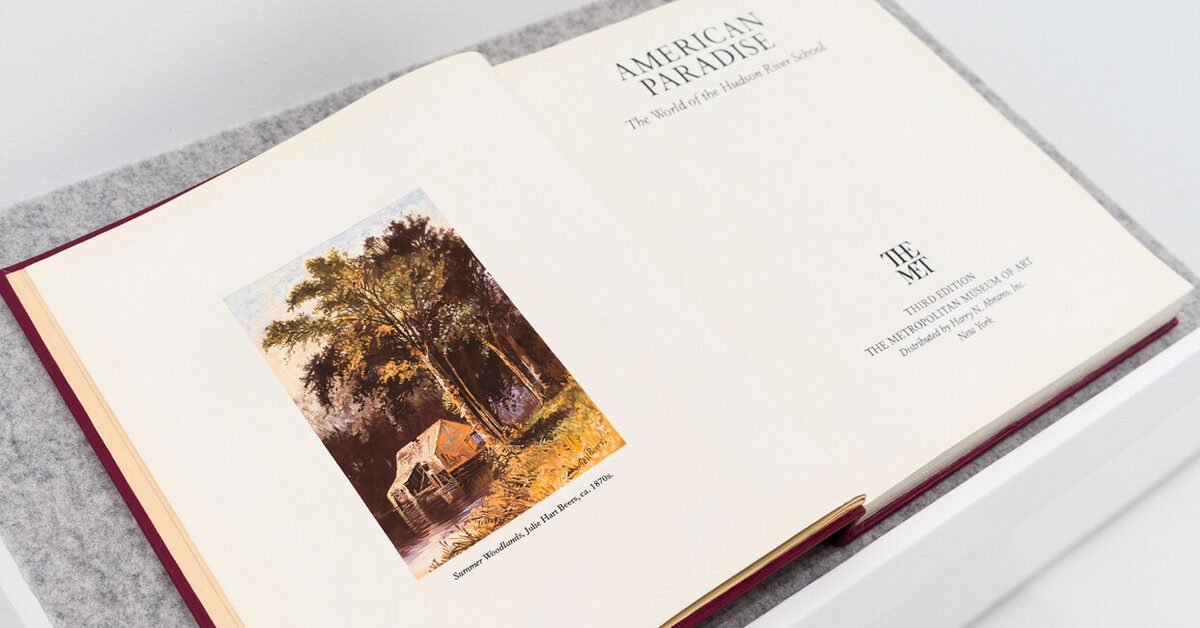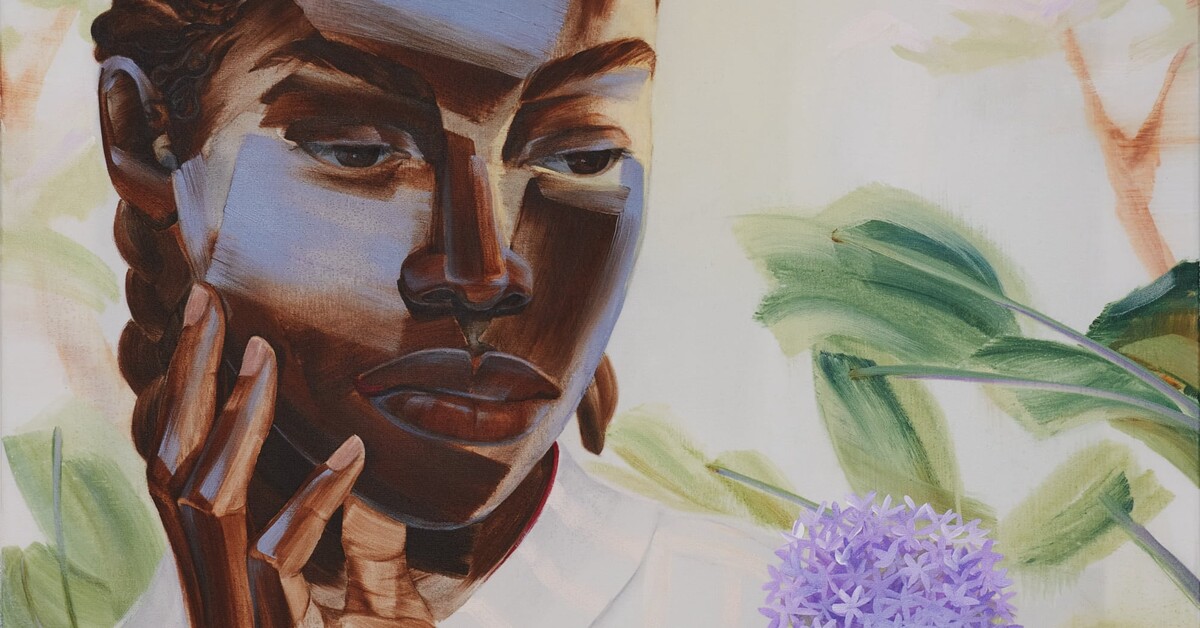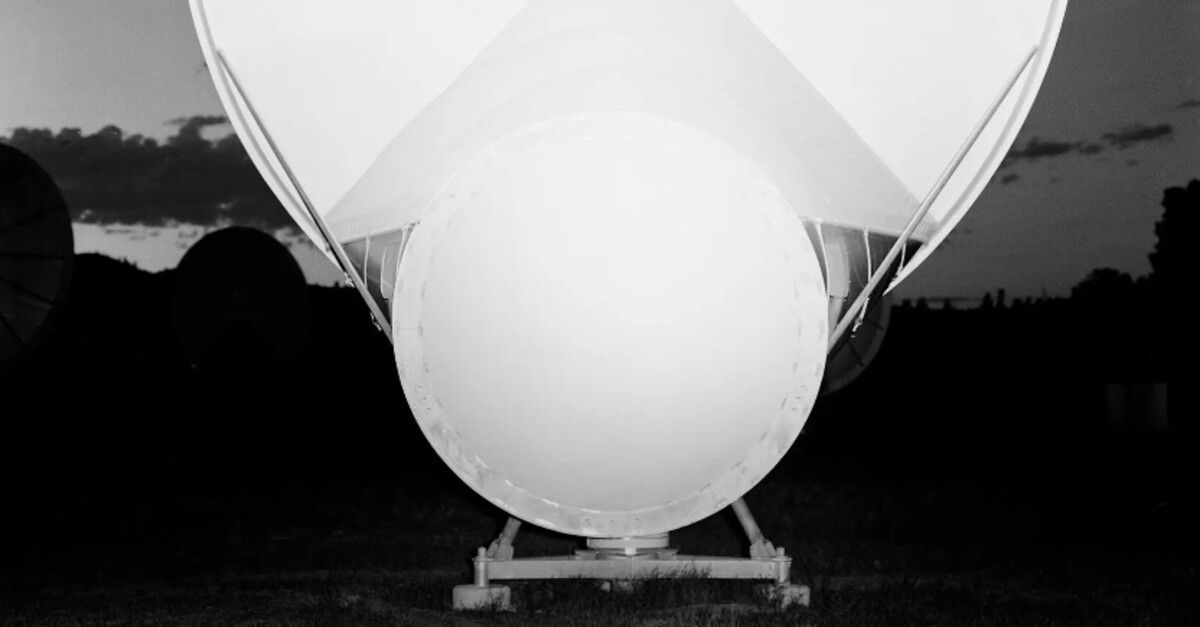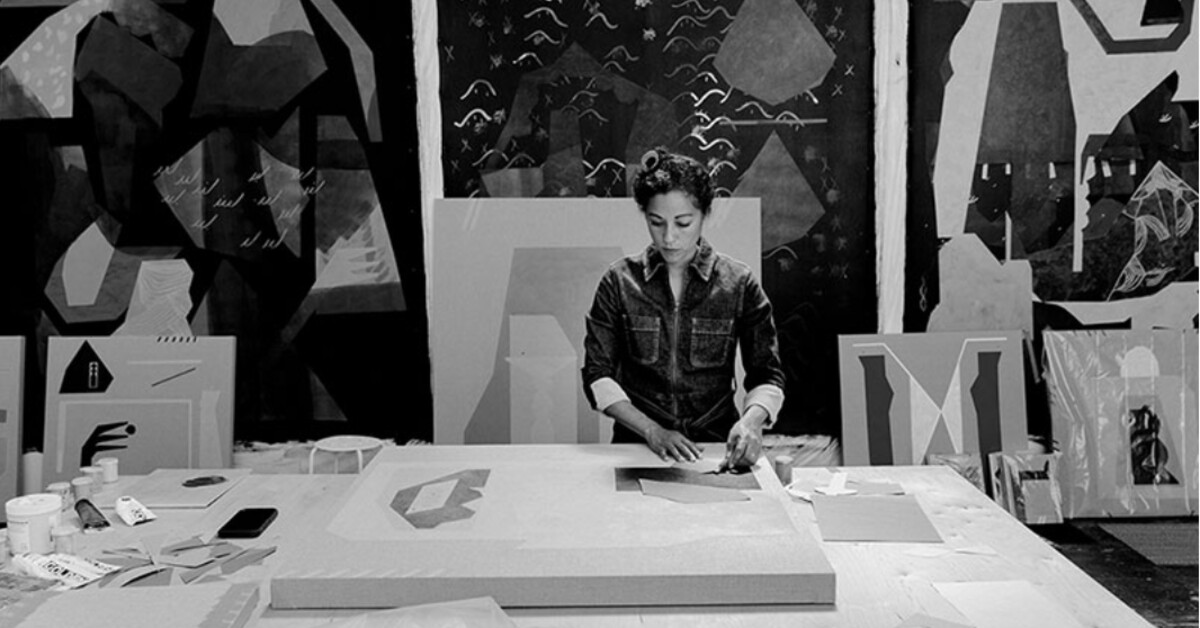With “Dusk” at Patron Gallery, Bethany Collins Is Nothing but Dawn
Newcity Art / Oct 9, 2025 / by Lucas Gomez-Doyle / Go to Original
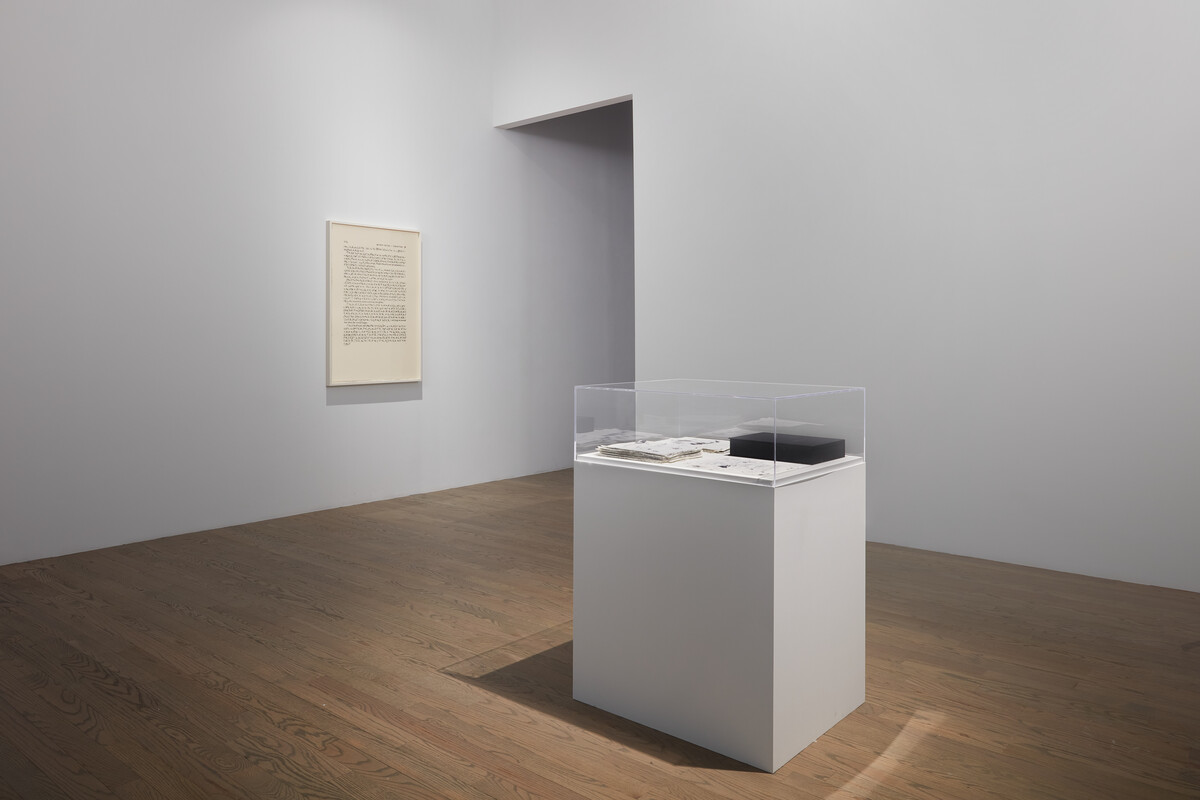
Bethany Collins, installation view of “Dusk,” 2025, at Patron Gallery/Photo: Patron Gallery
Bethany Collins, fresh off a solo exhibition at Seattle Art Museum, an inclusion in the Prospect 6 Triennial in New Orleans, and a forthcoming work in the “Monuments” show at The Museum of Contemporary Art, Los Angeles and The Brick, seems not to be slowing down, but rather speeding up. An artist with an insurmountable prowess and affinity for language, its intersection with race and history, Collins continues to meet the gold standard for artistic expression. With originality, grace and precision, “Dusk” at Patron Gallery offers an exceptional sampling of the artist’s practice through five different bodies of work, a collection of paintings, drawings and sculptures. At this Chicago venue, Collins is an exacting reminder that in the right hands, language’s ephemerality can be grasped, if only for a moment; perhaps there is no greater gift than this, someone who can trace language’s frailty and fugitivity in all its wonders.
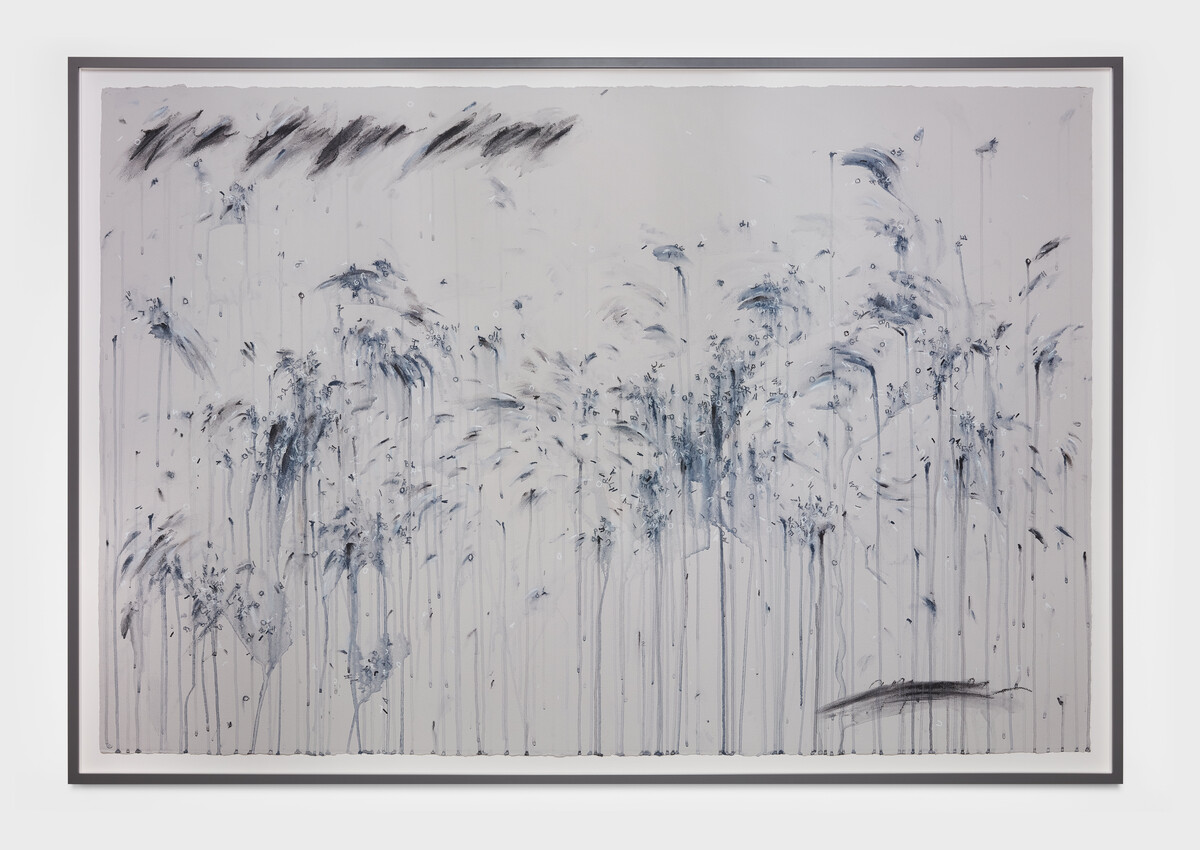
Bethany Collins, “When springtime blooms appear,” 2025, wax, pastel, and acrylic on paper, 44″ × 63 1/2″ × 1 3/4″/Photo: Patron Gallery
At the centerpiece of the show, three magnificent works from the series “The Battle Hymn of the Republic” transform a famous American contrafactum into visual landscapes. Contrafactums, or melodies that remain static while their lyrics alter, notoriously ebb and flow in their social, political and cultural pertinence. On the pictorial plane, every gestural mark washes out its own legibility. The stems of flowers look as if the pastel and acrylic have cried on the surface of the paper. Running colors like falling tears abstract semi-observable lyrical forms. The blue-greys and blacks darken the tonality of the work and adapted lyrics, at times barely legible cursive pirouettes, form clouds throughout. In other areas, small individual letters, some black, others white, are precisely positioned. The assemblage of textual and visual build results in an atmospheric gesture toward language. Without thunder and lightning, Collins has weathered an exquisite storm.
In three new bodies of creation, Collins explores the disappearance of language through the ubiquitous literature giant Herman Melville’s “Moby Dick, or The Whale.” In one version, Collins has rewritten the entire book with iron gall ink onto onion skin paper. Mimetic tracings of the famous text, redone, ordered and then completed, is a laborious feat, repetition as time and attention. On display inside a vitrine, sheets of paper stack up, densely rendering lines of black inscription wound tightly together. Iron gall ink, chosen for its historical connotations of longevity but eventual erosive nature, illusively renders an indiscernible battle with time. Eventually, language cannibalizes itself.
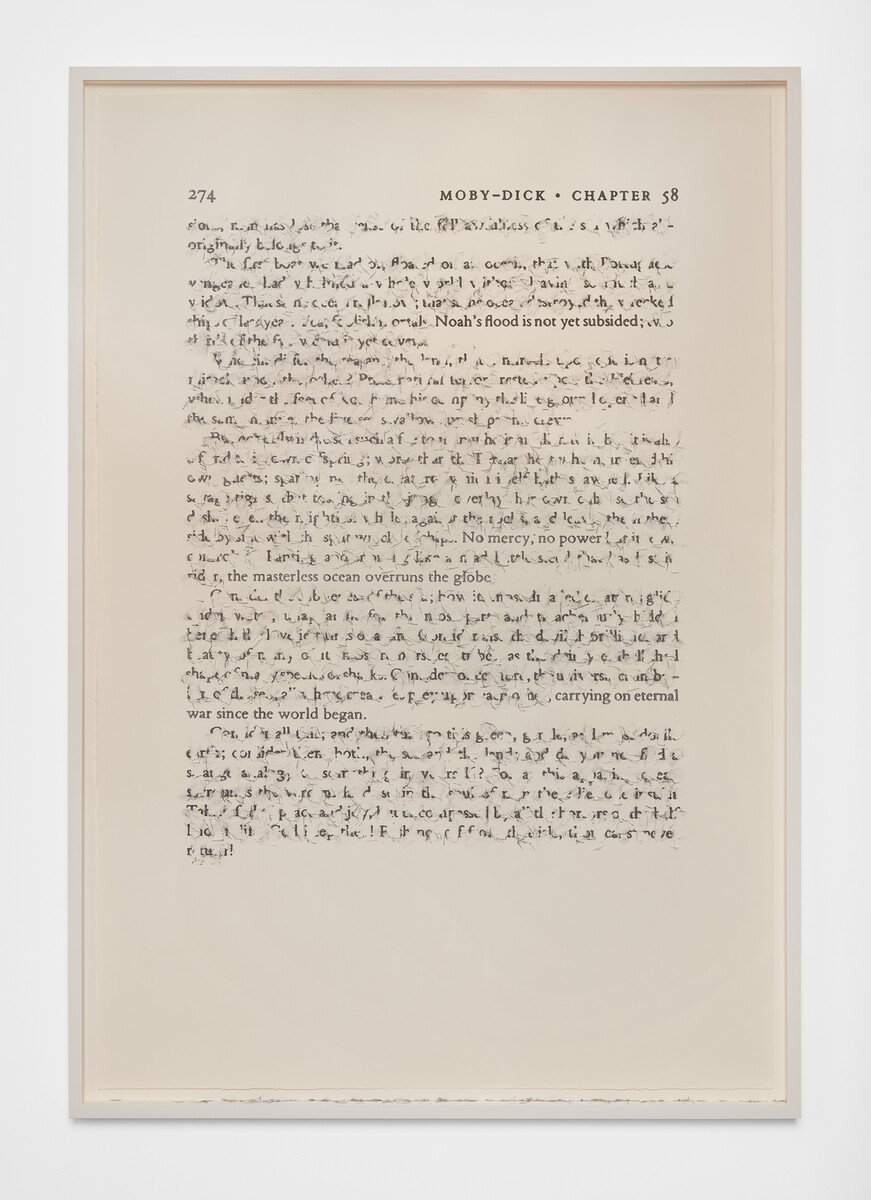
Bethany Collins, “Moby Dick, Vol. 2,” 2024, graphite on Somerset paper, 46 1/2″ × 32 1/2″ × 1 1/2″/Photo: Patron Gallery
Elsewhere in the gallery, Collins has recreated three individual pages from Melville’s text, graphite drawings on Somerset paper. Taking an eraser to the works, the artist has gone back over, blending out large portions of the language on each page. Left in its wake, only selected phrases stand out against otherwise hard-to-distinguish passages. From a distance, key portions ride against linguistically blurred waves. If distance washes us away, closeness reveals the surface tension. The paper is a tactile terrain, curled matter forming up where the artist has frantically rubbed. Gathered at the bottom of the frame are remnants of the physical work, language that has literally crumbled, a graveyard of meaning. Collected from this dispersive process, Collins transforms immaterial material into matter again, this time in the form of small piles. Resembling groupings of ash, these sculptural extensions are palpable representations of once discernible vessels. Haunting and beautiful, the filial works remember their past.
If language can at times fail to leave evidence of its skeletal remains, Collins has developed an extraordinary capacity to synthesize ghostly echoes through rematerial configuration. Whether it is in her paintings, drawings or sculptures, the works are textual and visual synecdoches of interpretation. In each piece, loss dissolves the contours of those things it inhabits. Linguistic trails made only through metamorphosis stray away from the porousness of language. Yes, the collection might be dusk, a precious venture into darkness, an unsettling time. But there should be no cause for a feeling of unrelenting demise when, within these walls, Bethany Collins is nothing but dawn.

